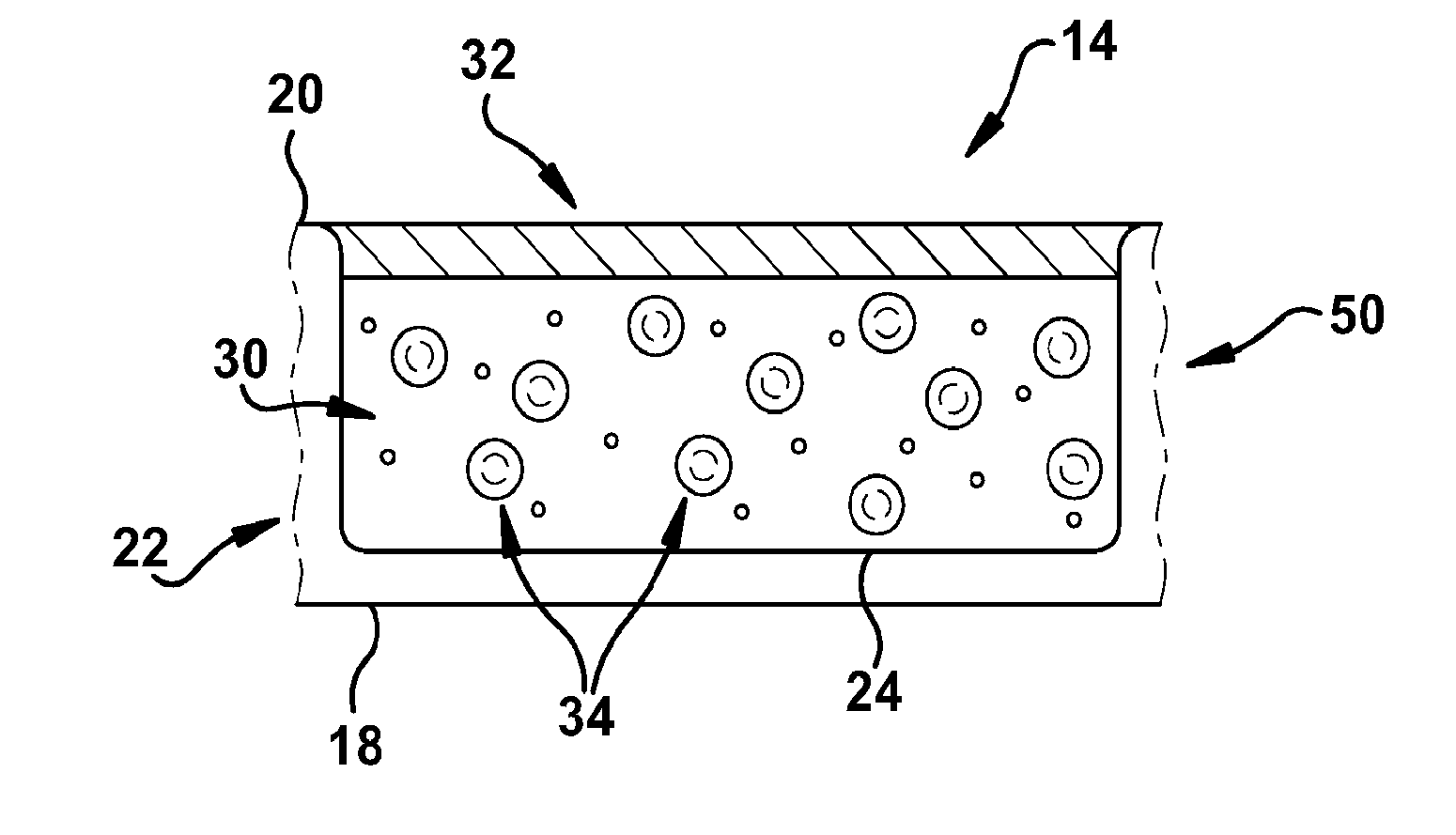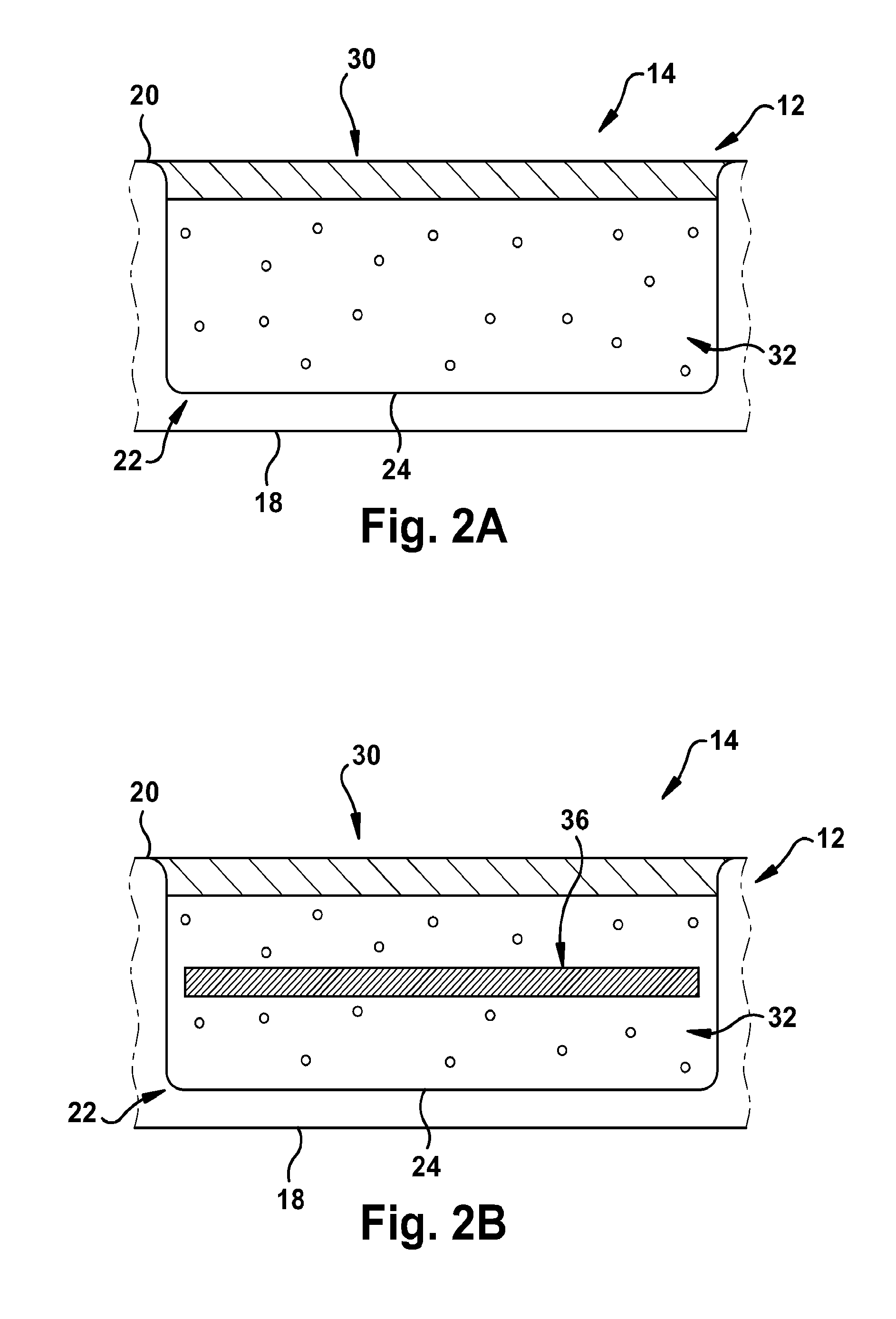In vitro point-of-care sensor and method of use
a point-of-care sensor and in vitro technology, applied in the field of in vitro sensors, can solve the problems of increasing the already high cost of care in the icu, limiting and potentially detrimental to patient safety, and positively affecting morbidity and mortality in critically ill patients
- Summary
- Abstract
- Description
- Claims
- Application Information
AI Technical Summary
Benefits of technology
Problems solved by technology
Method used
Image
Examples
example 1
Calibrations of HEMA-Based pH Sensors in Serum and Blood Sensor Construction
[0128]As shown in FIG. 16, a pH sensor having the following components was constructed as follows: a glass substrate (inert, transparent and impermeable); a 3-layered HEMA capsule; and white inert beads for suppressing sample optical interference layered on top of the sensing membrane. The HEMA capsule had the following configuration: a layer for attachment to the glass substrate (˜17 μm thick); a membrane capsule layer (˜150 μm thick); and a thin permeable layer for the analyte membrane and for protecting the structure against biofouling. The membrane composition had the following components as well: chromoionophore ETH350 (50 mmol); sodium ionophore Na IV (360 mmol); ionic site NaHFPB (55 mmol); and PVC:DOS (0.65).
[0129]In all cases, pH was adjusted by adding small aliquots of KOH or HCl to serum or blood.
Calibration of HEMA-Based pH Sensor in Serum
[0130]Serum calibrations for pH sensors: KOH or HCl was ad...
example 2
Calibrations of HEMA-Based Glucose-Sensors in Serum and Blood
[0132]A glucose sensor was constructed as shown in FIG. 24. The glucose sensing capsule contained a pH sensing membrane and a GOX solution. 2 mg of GOX was dissolved in 200 μL of PBS. 1 μL of GOX solution was added to each glucose sensing capsule. The sensor remained exposed to air overnight to allow for formation of the GOX membrane.
[0133]Sensors were made consisting of a pH sensing spot, 2 glucose sensing spots, and a white optical reference to create a multi-parameter sensing array. The sensor is composed of 3-layer HEMA membrane+glass substrate, as described in Example 1. FIG. 25 shows the sensing array.
[0134]In all cases, glucose level was adjusted by adding small weights of glucose monohydrate to serum or human blood.
Calibration of HEMA-Based Glucose Sensor in Serum
[0135]Serum calibrations for glucose sensors: glucose monohyrdrate was added to FBS to adjust to desired glucose levels. Sensors were placed in FBS soluti...
PUM
 Login to View More
Login to View More Abstract
Description
Claims
Application Information
 Login to View More
Login to View More - R&D
- Intellectual Property
- Life Sciences
- Materials
- Tech Scout
- Unparalleled Data Quality
- Higher Quality Content
- 60% Fewer Hallucinations
Browse by: Latest US Patents, China's latest patents, Technical Efficacy Thesaurus, Application Domain, Technology Topic, Popular Technical Reports.
© 2025 PatSnap. All rights reserved.Legal|Privacy policy|Modern Slavery Act Transparency Statement|Sitemap|About US| Contact US: help@patsnap.com



